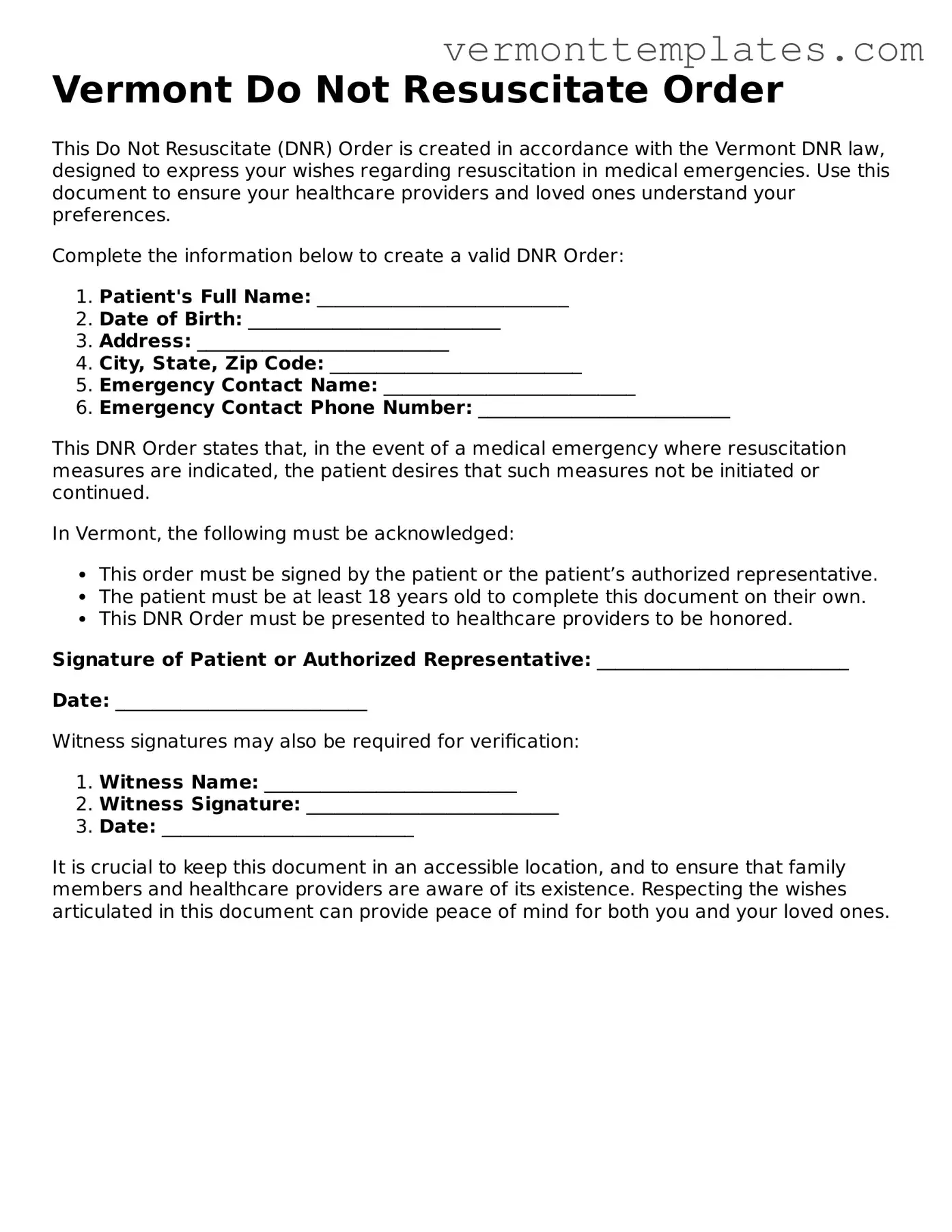The Vermont Do Not Resuscitate (DNR) Order form shares similarities with the Advance Directive. An Advance Directive is a legal document that allows individuals to outline their preferences for medical treatment in case they become unable to communicate their wishes. Like the DNR, it provides guidance to healthcare providers about the patient’s choices regarding life-sustaining measures, ensuring that their values and preferences are respected in critical situations.
Another document similar to the DNR is the Living Will. This document explicitly states an individual's wishes regarding medical treatment in scenarios where they are terminally ill or in a persistent vegetative state. Both the Living Will and the DNR focus on the individual's rights to refuse certain types of medical interventions, thereby prioritizing personal autonomy in healthcare decisions.
The importance of having the appropriate documentation when purchasing an RV cannot be overstated, particularly in Texas, where the Texas RV Bill of Sale form serves as a vital legal instrument in completing the transaction. Properly executed, this form not only grants proof of ownership but also details the terms agreed upon by both parties, ensuring that every aspect of the sale is clearly articulated. For those looking to streamline this process, resources like TopTemplates.info offer templates and guidance for completing the necessary paperwork efficiently.
The Physician Orders for Life-Sustaining Treatment (POLST) form also aligns with the DNR. POLST is designed for individuals with serious health conditions and translates their treatment preferences into actionable medical orders. Unlike the DNR, which is often used in emergency situations, POLST provides a more comprehensive approach by addressing a range of treatment options, including resuscitation and other life-sustaining measures.
The Medical Power of Attorney (MPOA) is another document that shares characteristics with the DNR. An MPOA designates a trusted person to make healthcare decisions on behalf of an individual if they are incapacitated. While the DNR specifically addresses resuscitation preferences, the MPOA can encompass a broader scope of healthcare decisions, ensuring that the individual’s overall wishes are honored.
Health Care Proxy documents are similar to the DNR in that they appoint someone to make medical decisions when the patient is unable to do so. This document ensures that the appointed proxy understands the patient’s wishes regarding life-sustaining treatments, including resuscitation, thus aligning with the intent of the DNR to respect patient autonomy.
The Do Not Intubate (DNI) order also parallels the DNR. While a DNR specifically addresses the refusal of cardiopulmonary resuscitation, a DNI focuses on the refusal of intubation and mechanical ventilation. Both orders reflect the patient’s desire to avoid invasive life-sustaining measures, emphasizing the importance of respecting individual healthcare preferences.
Another relevant document is the Comfort Care Order. This document prioritizes comfort and palliative care over aggressive treatment measures. Like the DNR, it indicates a preference for a natural death without the use of life-prolonging interventions, ensuring that the patient's quality of life is maintained during their final days.
The Withdrawal of Treatment form is also comparable to the DNR. This document is used to formally request the cessation of specific medical treatments that are no longer desired or beneficial. Both the Withdrawal of Treatment and the DNR focus on the patient’s right to refuse unwanted medical interventions, reinforcing the principle of patient-centered care.
Finally, the End-of-Life Care Plan shares similarities with the DNR. This comprehensive document outlines a patient’s preferences for end-of-life care, including pain management, emotional support, and resuscitation wishes. Both documents aim to ensure that healthcare providers understand and respect the individual’s desires during critical moments, fostering a dignified and compassionate approach to end-of-life care.
